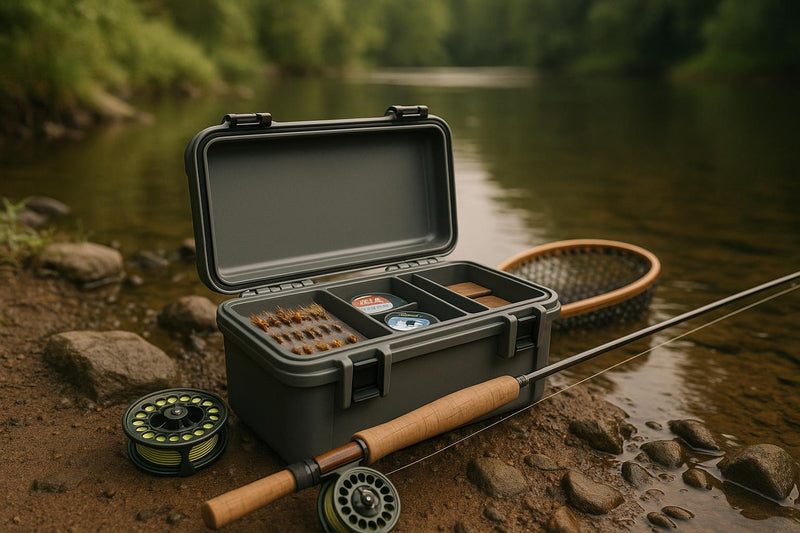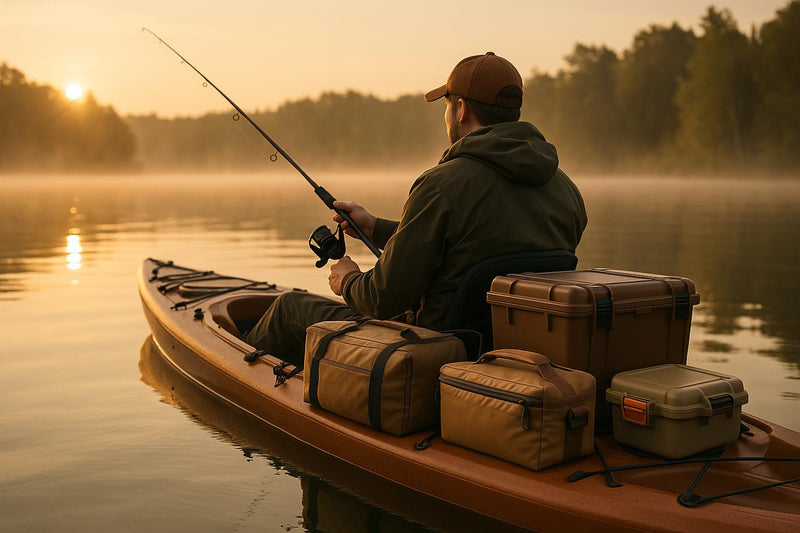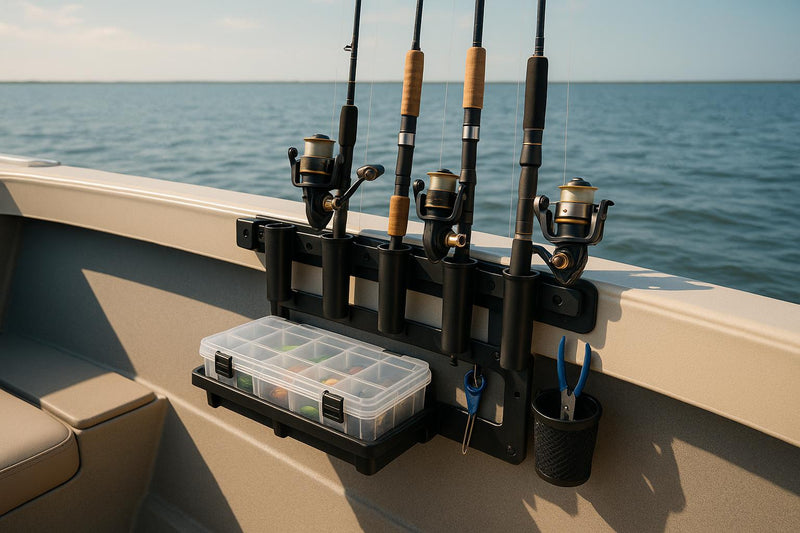When your fishing shorts develop seam issues, you face a choice: repair or replace. Here’s the quick breakdown:
- Repair: Best for minor seam damage like fraying or small splits. Costs $5–$15 and takes 30 minutes to 2 hours. Repairs restore basic functionality but may lack the original strength and durability.
- Replace: Ideal for extensive damage, multiple seam failures, or worn-out fabric. Costs $59.99 for new fishing shorts, offering full performance, durability, and modern features like water resistance and anti-chafe seams.
Key Considerations:
- Repairs save money short-term but may require repeated fixes.
- Replacements ensure reliability and long-term performance but are a higher upfront cost.
- Frequent seam damage often signals it’s time for a new pair.
Regular care, like inspecting seams, washing properly, and addressing minor damage early, can extend the life of your fishing shorts. But when repairs no longer suffice, investing in durable, high-quality replacements ensures you’re ready for your next fishing trip.
Types of Seam Damage in Fishing Shorts
Common Seam Problems
Seam damage is a frequent issue with fishing shorts, especially when exposed to the rigors of saltwater, sun, and constant activity. Here’s a closer look at some typical seam problems:
- Fraying: This occurs when threads start to unravel along the seam edges, leaving a rough and worn appearance. Activities like casting and exposure to saltwater or UV rays can speed up the process. What starts as minor fraying around the waistband or pocket edges can quickly spread, weakening the fabric.
- Broken stitches: High-tension areas like the crotch, inner thighs, or pocket seams are particularly prone to broken stitches. Even a single snapped thread creates a weak spot, which can lead to larger tears when you're out on the water.
- Seam splits: These are the most dramatic failures, where the fabric separates entirely along the stitched line. They often happen suddenly - like when bending to net a fish or navigating rocky terrain. Without reinforced stitching, side seams and back rises are especially at risk.
- Pocket separation: The weight of tackle, pliers, or other gear in your pockets can cause their seams to pull away from the shorts’ main body. This not only looks bad but also reduces the security of your pockets, making it harder to keep your gear safe.
- Thread deterioration: Over time, exposure to harsh marine conditions can cause threads to become brittle. This type of damage is often invisible until the seam fails completely, leaving you unprepared when it happens.
Recognizing these common issues highlights why durable, well-made seams are a must for fishing shorts.
Why Quality Seams Matter
The durability and performance of fishing shorts hinge on the strength of their seams. When seams fail, they don’t just compromise the shorts’ structure - they can also impact key features like water resistance, mobility, and comfort.
For example, a split seam can allow water to seep into areas meant to stay dry, defeating the purpose of the water-resistant technology designed to keep anglers comfortable. Similarly, well-constructed seams enhance mobility and stretch, allowing the fabric to move naturally with your body while casting, wading, or maneuvering on a boat. Poor seams, on the other hand, can restrict movement and create pressure points that lead to uncomfortable chafing.
Seam damage also affects the functionality of quick-dry fabrics. Damaged seams trap moisture, making it harder for the shorts to dry quickly after a splash or in humid conditions. This undermines the benefits of quick-dry fabric technology, leaving you feeling damp and uncomfortable.
Brands like Reel Comfort emphasize seam engineering in their Mens Fishing Shorts. Features like anti-chafe seams in high-friction areas, reinforced stitching at stress points, and four-way stretch panels ensure durability without sacrificing flexibility. These design elements are especially important when comparing padded fishing shorts vs regular shorts, where superior seam construction makes a noticeable difference in comfort and performance.
Weak seams, as seen with pocket separation, can fail under the weight of loaded gear. Reinforced seams, however, maintain the shape and security of pockets, even when carrying heavy items like tackle boxes or pliers.
Seam Repair: Methods, Pros, and Cons
How to Repair Seams
If the seams on your Fishing Shorts or Mens Fishing Shorts have seen better days, don’t worry - hand-sewn repairs can bring them back to life. Strong, intact seams are essential for keeping your shorts water-resistant and allowing you to move comfortably, so it’s worth taking the time to fix them properly.
For small seam splits, start by turning your shorts inside out. Use a backstitch or ladder stitch to make the repair almost invisible while keeping the seam strong. If the fabric is stretchy, opt for a zigzag stitch or a stretch stitch to maintain its flexibility.
Choosing the right thread is key. Here are some tips to match the thread to your needs:
- Polyester thread works well for most synthetic fabrics.
- Nylon thread adds extra stretch.
- Heavy-duty polyester or upholstery thread is ideal for areas that experience a lot of stress.
For added durability, place a piece of fusible interfacing or an extra fabric patch behind the damaged area. In spots that take a beating, double-thread your needle to boost the seam’s strength. These quick fixes can keep your fishing shorts functional and ready for action, at least until you decide to give them a more thorough repair or replace them entirely.
Replacement: When and Why to Replace Fishing Shorts
When Replacement is Needed
If your fishing shorts are showing multiple seam failures or the fabric has become thin, easily torn, or permanently stained, it might be time to consider replacing them. Repairs can only go so far, and when the material’s integrity is compromised - especially its water resistance - it can really impact your experience out on the water. Shorts that no longer hold their shape or provide the support you need are clear signs it's time for an upgrade.
Another factor to think about is cost. If repairing your shorts starts to approach the price of a new pair, it’s often more practical to invest in a replacement. After all, reliable gear is essential for an enjoyable and hassle-free fishing trip.
Benefits of Replacement
A new pair of fishing shorts can instantly restore the performance you depend on. You’ll get back the water resistance, proper fit, and durability that make fishing comfortable and efficient. Quality construction, reinforced seams, and durable materials ensure your new shorts will stand up to long days on the water.
Modern designs come with added perks. For instance, fishing shorts from Reel Comfort now include features like removable thigh pads for rod support, four-way stretch panels for better movement, and anti-chafe seams for added comfort. Quick-dry technology is another major plus, keeping you dry and comfortable even in wet conditions. On top of all this, a fresh pair of shorts offers a clean, polished look, making you feel as good as you fish.
Drawbacks of Replacement
While new fishing shorts bring plenty of benefits, there are a few downsides to consider. At $59.99, replacing your padded fishing shorts is a bigger upfront cost compared to a small repair. However, when you factor in the cumulative expense of repeated fixes, replacement often makes more sense in the long run.
There’s also the adjustment period to think about. New shorts might feel a bit stiff or unfamiliar at first and could take a few trips to break in fully. Additionally, even within the same brand, sizing or design updates - or changes in your own body - might mean the fit isn’t exactly like your old favorites. Finding the right size or style may require a little trial and error.
Finally, replacing your shorts contributes to waste, which can be a concern for those who prioritize sustainability. It’s worth considering how to dispose of your old gear responsibly or look for brands that emphasize eco-friendly practices.
sbb-itb-cb0a783
Seam Repair vs. Replacement: Direct Comparison
When your fishing shorts start showing seam issues, deciding between repair and replacement often comes down to a few key factors like cost, durability, and overall performance.
Repair vs. Replacement Comparison Chart
| Factor | Seam Repair | Replacement |
|---|---|---|
| Upfront Cost | Around $5–$15 for materials or professional help | $59.99 for a new pair of fishing shorts |
| Time Investment | 30 minutes to 2 hours, depending on the damage | Ready to wear immediately after purchase |
| Durability | Temporary solution; may need follow-up repairs over time | Longer lifespan with proper care (usually 2–5 years) |
| Performance | Restores basic functionality but may lack original strength and water resistance | Fully restored features and performance, including water resistance |
| Best For | Minor damage, single seam issues, or tight budgets | Extensive damage, multiple seam failures, or when reliability is a priority |
This chart provides a quick look at the trade-offs, but let’s break it down further.
While repairs are cost-effective, they require time and effort - either yours or a professional’s. On the other hand, purchasing new mens fishing shorts eliminates this hassle, offering immediate usability and consistent performance.
It’s worth noting that while repairs can restore functionality, they rarely bring back the original seam strength or water resistance. New fishing shorts, however, are designed with advanced features like quick-dry fabrics and water-resistant materials, ensuring they’re ready for the demands of fishing.
Durability is another major factor. Repaired seams often become weak spots over time, especially under repeated stress. In contrast, new fishing shorts come with reinforced stitching and high-quality construction, designed to last through years of wear and tear.
For anglers who frequently encounter seam issues or spend a lot of time on the water, investing in new gear might be the better long-term choice. Seam integrity is crucial for maintaining the performance and reliability of your fishing shorts. If you’re considering an upgrade, check out Reel Comfort's premium padded fishing shorts and their collection of mens fishing shorts for options that combine durability, comfort, and performance.
How to Make Your Fishing Shorts Last Longer
Taking good care of your fishing shorts is a smart way to avoid costly repairs and keep them in great condition for years. With a little attention and maintenance, you can extend their lifespan, saving both time and money while staying comfortable during your fishing adventures.
Care Tips for Fishing Shorts
Regular Inspections Keep Problems at Bay
Seam damage rarely happens all at once - it usually starts with small tears or loose threads that grow worse over time. Regular inspections are key to catching these issues early. As Mustang Survival advises, "Your flotation clothing should be inspected: After every immersion; Before and after use; Whenever the integrity of the suit may be in doubt."
After every cleaning and before each fishing trip, take a close look at your men's fishing shorts. Pay particular attention to the seams, especially in high-stress areas like the crotch, waistband, and pockets. Look for loose threads, small separations, or any signs of stress in the stitching. These inspections are the foundation for keeping your shorts clean and properly stored, which helps protect them in the long run.
Wash Them the Right Way
Fishing shorts, often made from materials like polyester, nylon, or spandex, need special care to preserve features like UV protection, moisture-wicking, and odor resistance. Always start by checking the care label for specific washing instructions, especially if the shorts have waterproof coatings or other special treatments.
To clean them, turn your shorts inside out and place them in a mesh laundry bag. Use cold or lukewarm water with a mild detergent to avoid damaging their performance features. Skip heavy-duty detergents and bleach, as these can weaken the fabric and reduce its ability to wick moisture and resist odors. After every fishing trip, give your shorts a good wash to remove sweat, fish blood, sunscreen, and mud. Regular cleaning prevents salt and grime from building up, which can weaken the fabric and seams over time.
Dry and Store Them Properly
Once washed, how you dry and store your fishing shorts matters just as much as how you clean them. High heat can harm synthetic fabrics by causing them to lose their shape and elasticity. Whenever possible, air dry your fishing shorts by laying them flat or hanging them in a shaded area away from direct sunlight.
If you must use a dryer, stick to a low heat setting and remove the shorts while they’re still slightly damp. This helps prevent over-drying, which can stress the fabric and seams. When storing your shorts, choose a cool, dry, and well-ventilated space. Avoid stuffing them into tight spots or leaving them in damp conditions, which can lead to mold and material damage.
Don’t Ignore Damage
If you spot any seam damage during your inspection, take care of it right away. Loose threads can often be fixed with a quick hand stitch, stopping small problems from becoming big ones. Keep an eye out for other signs of wear, like discoloration, stiffness, tears, or frayed edges. If you notice significant seam separation or multiple areas of damage, it might be time to replace your shorts instead of trying to repair them repeatedly.
Investing in high-quality fishing shorts with reinforced stitching and durable materials can make a big difference in how long they last. Features like quick-dry fabrics and water-resistant materials not only improve comfort but also help protect the seams and fabric from the stress of moisture and prolonged wetness. A little care goes a long way in keeping your gear ready for the next trip.
Conclusion: Choosing Between Seam Repair and Replacement
Deciding whether to repair or replace your fishing shorts boils down to a few key considerations: the extent of the damage, the cost involved, and the long-term value of your gear. Small seam tears can often be fixed without much hassle, but if you’re dealing with major issues - like significant fabric unraveling or multiple seam failures - it might be time to consider a replacement.
Cost is a big factor here. Minor repairs are usually budget-friendly, but when repair costs start creeping up to match the price of a new pair, replacing your shorts makes more sense. Plus, repeated repairs can signal deeper issues with the durability of your gear. If you find yourself constantly patching seams, fixing pockets, or addressing other wear and tear, upgrading to a sturdier option is likely the smarter move.
For example, investing in high-quality gear like Reel Comfort’s men’s fishing shorts can save you time and money in the long run. These shorts are built with reinforced stitching and ergonomic, anti-chafe seams to handle the rigors of active fishing. Add in their quick-dry, water-resistant fabric, and you’ve got a pair designed to minimize repairs and maximize performance.
Frequent field repairs can disrupt your fishing trips and leave you frustrated. A good replacement option offers reliability and peace of mind, especially if it’s built to last. By choosing well-made gear, you’ll spend less time worrying about upkeep and more time focusing on what you love - fishing.
Take a close look at your shorts. If the damage is minor and the overall quality is solid, a quick repair might do the trick. But for recurring or severe issues, upgrading to a durable, well-constructed pair is a better bet. Regular care and inspections can stretch the life of your gear, ensuring it stays as dependable as your passion for the water.
FAQs
When should I replace my fishing shorts instead of repairing them?
If your fishing shorts are showing heavy fabric wear, have large or multiple tears that are tough to repair, or suffer from noticeable water damage, it might be time to retire them. Likewise, if they’ve lost their shape or no longer offer the support and durability you need, getting a new pair is often the smarter move.
Constant repairs can become both frustrating and expensive. Upgrading to a new, high-quality pair - like those from Reel Comfort - can save you the trouble while giving you better comfort and performance for your fishing adventures.
What’s the best way to care for fishing shorts to avoid seam damage and make them last longer?
To keep your fishing shorts in top shape and avoid seam damage, rinse them thoroughly with fresh water after each use - especially if they've been in contact with saltwater. This simple step removes salt and debris that can weaken the fabric over time. When it’s time for a deeper clean, stick to a mild detergent and steer clear of harsh chemicals that might harm the material. Always air dry your shorts in a shaded area to preserve their color and durability.
Make it a habit to inspect the seams regularly for signs of wear or small tears. Addressing minor issues early can save you from bigger problems later, ensuring your fishing shorts stay ready for many adventures on the water.
What features should I look for in fishing shorts to make sure they’re durable and comfortable?
When picking out fishing shorts, prioritize features that make them tough and comfortable for those long hours on the water. Opt for quick-dry, water-resistant fabrics to help you stay dry, and choose shorts with reinforced stitching to handle the rigors of fishing. Materials with a bit of stretch are great for ensuring you can move freely, while UPF sun protection is a must to safeguard your skin on sunny days. Don't forget about practical pockets to keep your essentials organized and easily accessible. These details make sure your fishing shorts can handle the demands of the day while keeping you comfortable.




